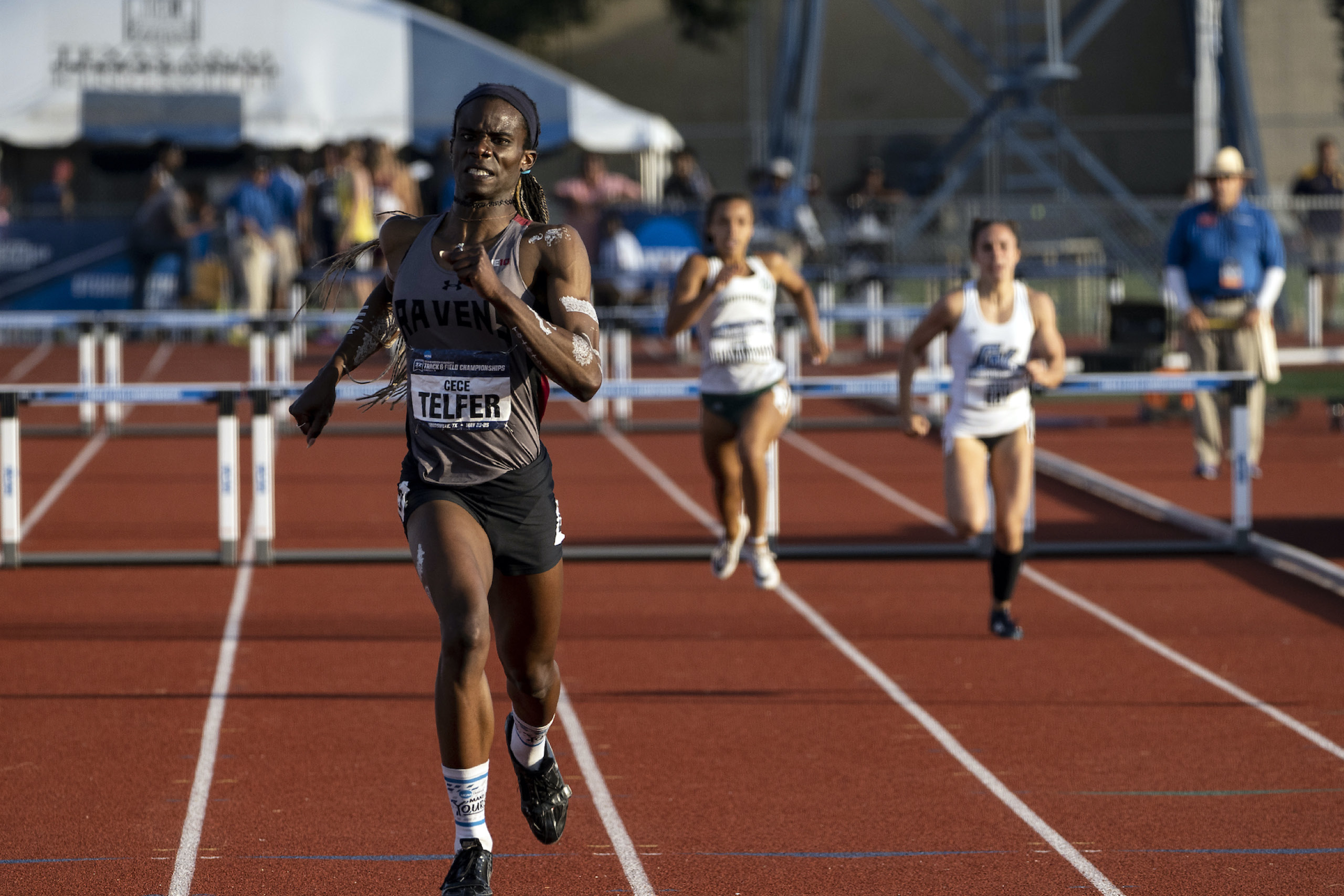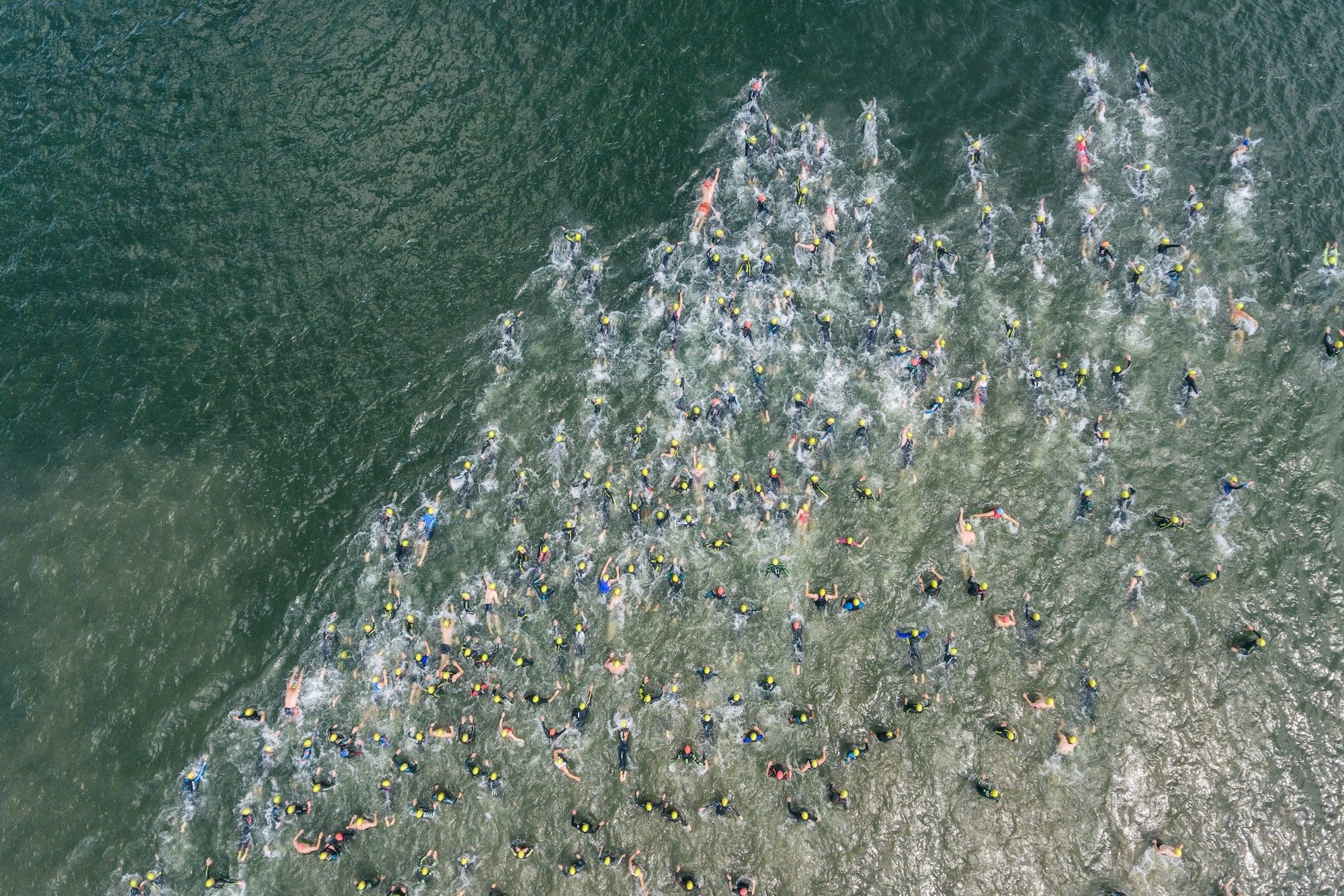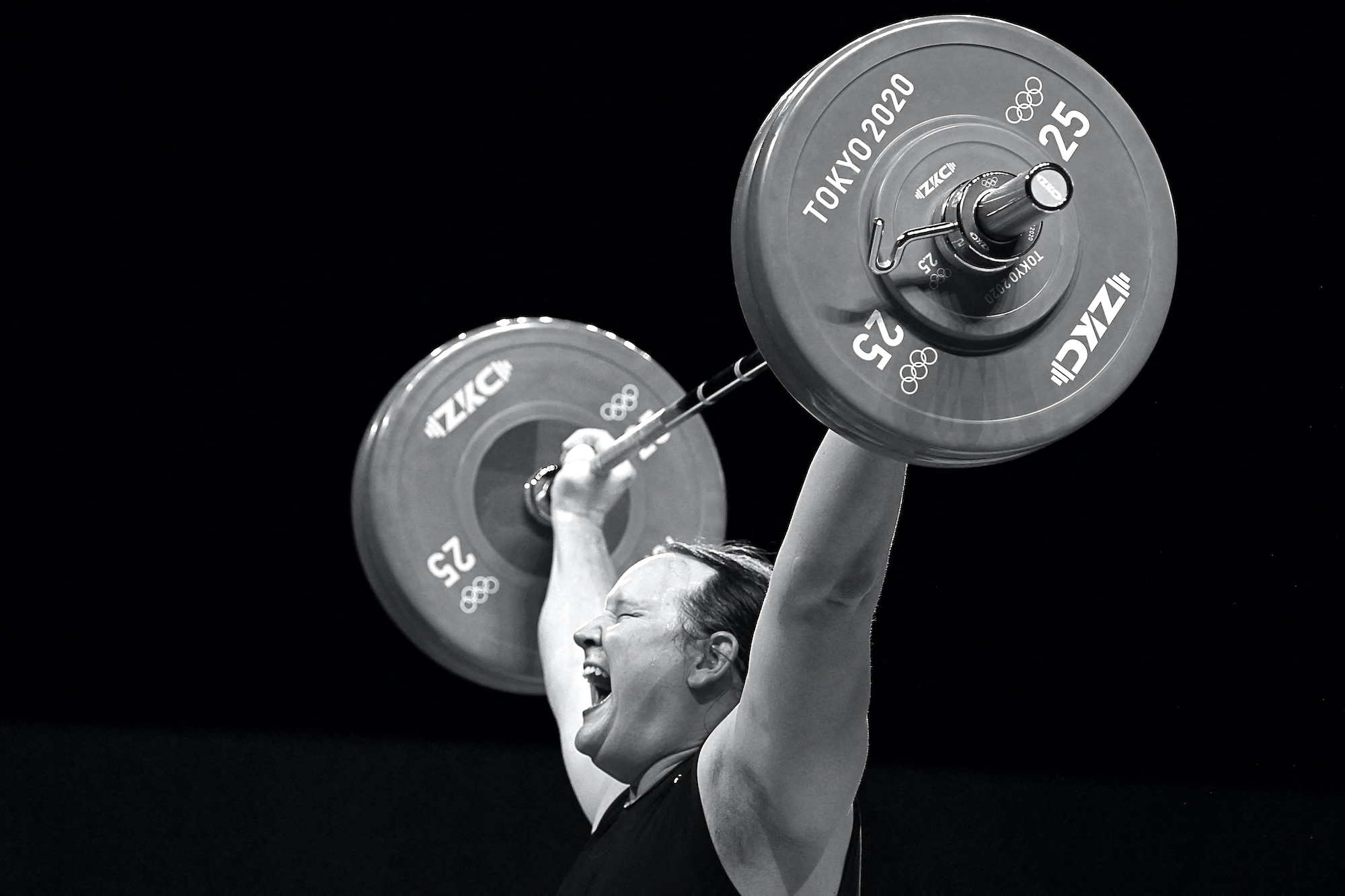Exploring the debate on transgender athletes in sport
The debate about transgender athletes in sport has raged on in recent months. Here, we take a look at the current state of affairs and how triathlon is responding

World Triathlon has yet to enter the transgender-athlete-in-sport debate, but as more sports face high-profile examples of trans women transitioning and achieving resounding victories, it’s time for action and leadership in a sport revered for its equality.
But how and where to even begin when the answer requires finding the right balance between inclusion and fairness? Tim Heming reports…
Lia Thomas has rapidly become the most famous swimmer in US college history. For some, that represents a cause for celebration, a sign of a more enlightened and inclusive sporting world. For others, it’s the latest blow to embattled women’s sport that’s fighting for its very survival.
That views are so polarised partly explains why emotions run so high, and any middle ground looks a long way off as governing bodies fumble over finding acceptable policies to accommodate trans athletes in traditional male-female competition.
For much of the past year that seems to be what the National Collegiate Athletic Association has done in the case of Thomas. Formerly William Thomas, the University of Pennsylvania student transitioned from male to female, completed the 12 months of hormone suppression treatment required before swimming competitively in college meets as a trans woman. While William Thomas was a middle-ranked collegiate swimmer for three years, Lia became the fastest woman freestyler in college sport.
The NCAA shifted uncomfortably at the predictable backlash. In January, its governing body, USA Swimming reduced the acceptable level of testosterone in the blood for trans women swimmers from under 10 nanomoles per litre to under 5 nmol/L and extended the requirement to be at this lower level to three years before competing.
In addition – and seemingly in direct conflict with a new International Olympic Committee (IOC) framework issued in November – any trans woman swimmer would have to show they didn’t have a lasting advantage from their male biology.
At time of press, this was subject to threat of legal action by the university should Thomas be barred from competition. Yet while Thomas is caught in the media crosshairs, so too are the cis female Penn swimmers on her team. “Lia swimming was a non-negotiable,” an anonymous Penn swimmer told the Washington Examiner. “The school made it seem like they were trying to say, ‘Don’t even bother to come to us with your concerns or anything like that because we’re not going to help you.’”
LGBTQIA+ terms
Transgender
Your experienced gender is different than the one you were assigned at birth.
Transition
Transition, for a trans person, could start and end with coming out as a new gender – or it could mean a life of gender-affirming hormone replacement therapy and surgery. Transition is a process, and it’s different for every trans person. No one needs to complete a specific set of steps to have transitioned.
Cisgender
Your experienced gender aligns with the gender you were assigned at birth.
Sex
Your sex is the biological combination of your bodily organs, hormones, and chromosomes. Sex and gender are associated, but not the same nor interchangeable.
The right to fair competition

The Thomas case is a microcosm of a far bigger issue that transcends sports, where defenders of cis women’s rights argue that inclusion of trans women into society comes at far too high a cost. In the case of sport, it’s chiefly the right to fair and at times, safe, competition.
While Penn University’s women swimmers have been cautioned against speaking out, others have been more forthright in their views, including Britain’s 1980 Olympic medallist, swimmer Sharron Davies. “Sex is a biological immutable reality,” Davies explained to the Brick Session podcast. “If someone wants to express themselves in a feminine or masculine way they are absolutely entitled to and should be treated with the same human rights as anybody else.
“However, biological sex exists and when it comes to sport, which is based on physiology, it has to be accommodated, understood and accepted as the reality. The reason we have categories for male and female is because if we didn’t females would win nothing. I don’t understand how, all of a sudden, we can sweep this away.”
Can an acceptable solution be found? Trans athletes’ participation isn’t new in sport, but is more topical due to the high-profile presence of individuals such as New Zealand weightlifter Laurel Hubbard who competed in Tokyo 2020, Canadian track cyclist Veronica Ivy or Jamaican-American track athlete, CeCé Telfer.
No presumption of advantage

To understand the bind, the evolving stance of the IOC is a good place to start. In 2003, it adopted a policy to allow post-operative, gender-transitioned athletes to compete in the Olympics if they could provide legal proof of their completed sex change.
In 2016, the IOC dropped the requirement for transgender athletes to undergo surgery, and having retired from elite competition, trans woman cyclist Kristen Worley won a landmark court ruling in a Canadian court to force a rethink on the process and potentially damaging medication trans athletes were forced to take to compete. Worley provides powerful testimony of her own experience.
“I was the first athlete to be ‘gender tested’ under measures implemented in the IOC’s 2003 Stockholm Consensus – a humiliating and invasive medical examination that amounted to a sanctioned sexual and psychological trauma,” she wrote. “In 2016, I sued several of sport’s governing bodies – including the IOC, the World Anti-Doping Agency, the International Cycling Union, Cycling Canada and Ontario Cycling – for violating my human rights. They only wanted to hit the survivor with a bigger hammer.”
In November 2021, the IOC went one step further, reviewing its procedures again and produced a framework for fairness, inclusion and non-discrimination based on gender identity and sex variations. In a 180° turn it decreed there should be “no presumption of advantage” as far as trans athletes competing in sport is concerned.
The IOC moved to a place of stewardship from leadership, putting the onus on individual sports to find a solution. But while the framework wasn’t binding, those individual sports also cherish their Olympic status. Net result? The federations now feel compromised.
World Triathlon’s position

A joint statement of the International Federation of Sports Medicine and European Federation of Sports Medicine Associations criticised the framework for being drafted from a human rights perspective without enough consideration for medical and scientific issues.
For sports that already had polices in place for the inclusion of trans and women athletes with differences of sexual development (DSD), this presented a quandary. The potential consequence was either to exclude all transgender athletes on the grounds of advantage – which would be unlawful in many countries and contrary to the Olympic charter – or allow self-identification that essentially equates to no eligibility rules, giving sport questionable meaning.
This is the position World Triathlon finds itself in. “We are following the discussions among the international federations, including the position of some like World Athletics, UCI [cycling] and FISA [rowing] that have already updated the rules reducing the testosterone limits to 5 nmol/L for trans women,” Sergio Migliorini, chair of the World Triathlon Medical Committee, says.
“We have a working group to update our rules during 2022 to have a fair competition between transgender and cisgender [athletes]. We hope that the IOC framework will be improved considering the medical and scientific aspects.”
As Migliorini says, testosterone levels are being used as the objective biomarker, but their worth is contested by advocates on both sides of the debate. Australian athlete and transgender advocate Kirsti Miller and South African sports scientist Ross Tucker, who advises World Rugby and UK Sport on its trans inclusion policies, could hardly be further apart in their views.
But one thing they do agree on is that testosterone is a poor measure to assess the differences in performance. The typical adult male might have testosterone levels of 8-30nmol/L, and an adult female more likely to be in the 0.5-3nmol/L range. But Tucker says the fixation on testosterone levels for performance is wrong.
“Those such as Lia Thomas, who have gone through puberty as a biological male, benefit from testosterone and other male hormones that have a significant performance effect by increasing muscle mass, strength, the size of the heart and lungs and reducing body fat,” he told the BBC. “When sport was first confronted with this challenge they looked at testosterone as the cause of the difference – and thought it might be the solution, too.”
But it doesn’t seem to be. Tucker cites studies that track trans women performance over 12 months where drugs are administered to bring testosterone to within the female range. “They universally show the same thing,” he says. “If you have an initial difference in muscle strength of say 30-50%, studies suggest lowering testosterone reduces it by between 5-9%. Skeletal mass and bone density do not change, and muscle volume and mass come down by 5%.”
Testosterone is not the solution

His point is that the testosterone has already done the work in puberty to give the biological male an advantage – and a snapshot of testosterone in later life proves very little. He draws on the analogy of height in basketball and VO2 max in marathon runners. Having it in abundance is almost a prerequisite, but once you’re at the elite level other factors such as skill, dexterity and decision-making come into play.
Miller, who represented her country at modern pentathlon, returned to sport in 2013 after transitioning. “We must stop comparing how long it takes to minimise testosterone. It’s totally irrelevant,” she told the Trans Porter podcast.
“The only science with testosterone is it makes absolutely no sense to have it as a female or a male determinant in sports. Before we transition as XY trans women, around 25% of us would naturally have lower testosterone levels under 10nmol/L. Twenty-five percent of elite male athletes in sports like weightlifting have levels below 5nmol/L naturally. But I was 30nmol/L. There’s no correlation between me being more athletic at 30 than this person at 5.
“To blanket ban any individual doesn’t make any sense. Why would Kirsti have had to spend two years on the side-lines to enter into equestrian as a female? Or archery? It never made any sense to have every sport the same.
“The IOC new framework is a paradigm shift. Each individual can only be treated on their own merits which is what I believe is the way forward. I can see it not only benefiting trans women, but intersex women and cis women with high testosterone. I believe this is a massive step forward for
all women in sport.”
Physical tests

Miller cites Australian Rules Football as an organisation that has adopted a policy where a trans person has to undergo physical tests to measure speed, strength, endurance and physique before deciding if they can take the field. “This is what every sport is going to have to do,” she adds. “They can’t just say trans girls have an advantage without looking at all the people in their sport.”
She also issues a warning for sports that rail against the IOC policy, such as World Athletics, formerly the IAAF. “The IAAF is now leaving itself open to legal challenges at CAS [Court of Arbitration for Sport] and also in the courts outside of sport. All it’s going to take is one trans athlete who is post-operative and says it’s unhealthy to have 5 nmols/L. It’s been proved beyond doubt that androgen deprivation is a very serious illness and that’s what they’ve forced athletes like me, and Caster [Semenya] and other XY intersex athletes to do. We’ve all become unwell. The IOC have been smart on this. Other sports choose to ignore it at their peril.”
Where do we go from here? More studies are being undertaken to quantify relative sporting performance of trans women in competition, but these will take years to complete. For now, those saying biological males have a performance advantage can simply point to the record books in terms of male versus female competition.
Yet, it could be argued that trans women, while adhering to testosterone suppression rules that have been in place, have not thus far dominated women’s sports. As Kristen Worley stresses, transitioning may place such mental and physical demands on an individual that they aren’t in any health to compete at an elite level, particularly over the long term.
“The XY endocrine system collapses without testosterone, whereas the XX endocrine system doesn’t,” she explains. Worley says the subject has been “weaponised” in the press, and fears – citing her own example – that the longer an XY individual is forced to suppress testosterone beyond a natural level, the more long-term health problems are likely.
“Androgen deprivation is an extremely dangerous medical condition unique to the XY karyotype and is known medically as hypogonadism. Outside of women’s sport it is treated with testosterone supplements and intervention to elevate blood levels to increase health and wellness.”
Those passionate about the debate tend to come down heavily on one side or the other. Former British marathon runner Mara Yamauchi said on Twitter: “The impact of just one trans woman in the female category is potentially massive: females excluded, records, money, qualification, scholarships, girls looking on thinking sport is not for me…”
Sharron Davies suggests there should be a protected women’s category and an ‘open’ category for everybody else. For some inclusion trumps all and trans woman should be able to compete with cis women. Kristen Worley doesn’t have all the answers either, but encourages individual sports to “do the work” to try and find their own solutions.
Top image credit: Nigel Roddis/Getty Images




